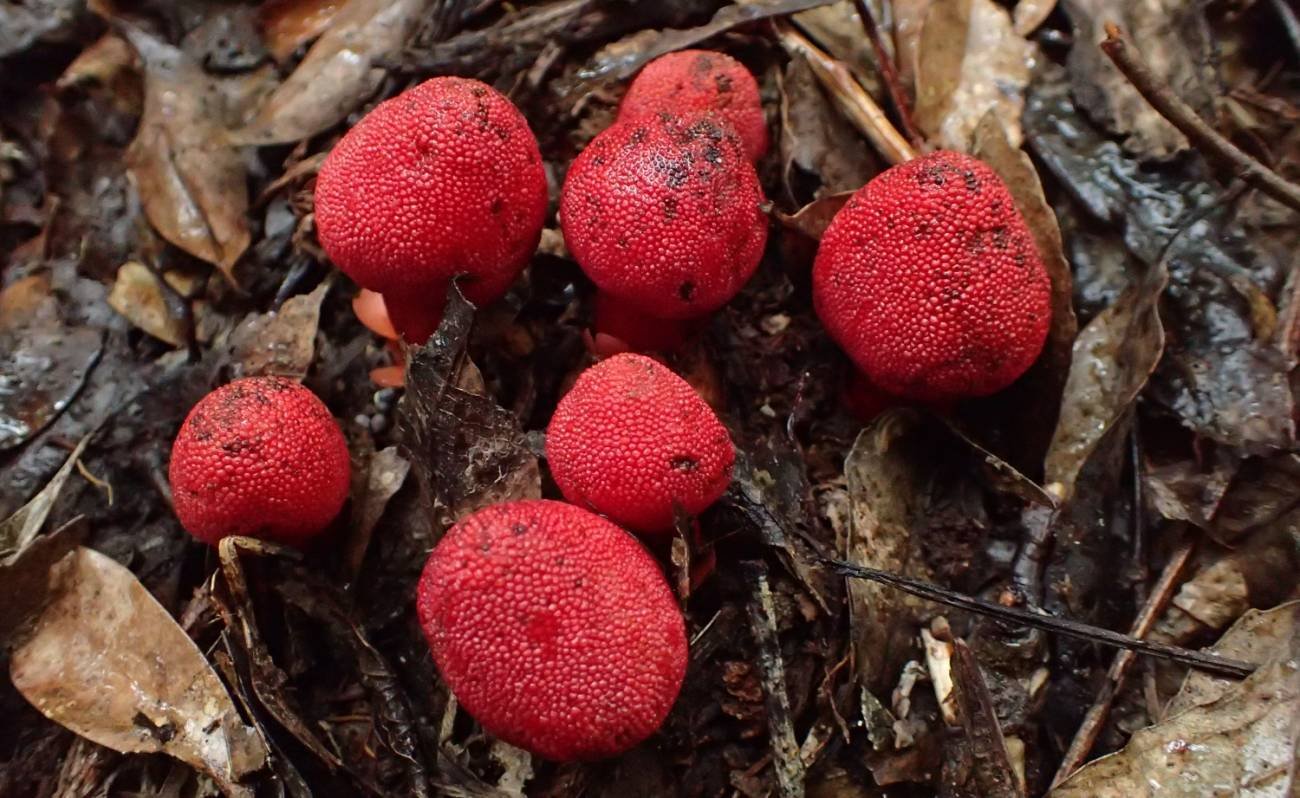The iconic Amami rabbit (Pentalagus furnessi), the only dark-furred wild rabbit in the world, plays a key role in seed dispersal of the non-photosynthetic plant Balanophora yuwanensis, a study from Kobe University in Japan shows. and published in the journal Ecology. The discovery sheds light on the hitherto unknown ecological role of this endangered animal.
Pentalagus furnessi is endemic to the subtropical islands Amami-Oshima and Tokunoshima, which are part of the Japanese Ryukyu archipelago. Knowledge about its ecology is scarce, as it is a rare and nocturnal animal that inhabits dense forests. “These environments are characterized by dense vegetation and high humidity,” describes Kenji Suetsugu, a professor at the Faculty of Science at Kobe University and co-author of the study, to SINC. This mammal “feeds mainly on leaves, stems and bark of native trees and plants that grow in its habitat”, he adds.
Suetsugu laments the danger that lies ahead: “Their population has drastically declined over the years, but there are conservation plans in place to protect them. Populations of this rabbit gradually recover thanks to the hunting of predators such as mongooses or wild cats, ”he explains. As it is endemic, it can only be found in the Ryukyu archipelago and has long been separated from other rabbits, which is why its evolutionary qualities are unique in the world, according to the professor.
Scientific and cultural relevance
This species has great scientific value “because it is a model organism to study the adaptation of mammals to island environments”, underlines the Japanese scientist. However, it also has enormous cultural and historical significance for the local communities, as it is part of the idiosyncrasy of the islands where it lives: “In recent years it has become an important symbol of the region and is used to promote tourism and native culture. .

Amami’s rabbit on Amami-Oshima Island. / University of Kobe
Seed dispersal is an essential process for the evolution and ecology of land plants.
The scientist also points out that this animal is an indicator of the health of the ecosystem: “It prefers dense evergreen forests and its well-being can be closely linked to that of other species in the region”, as demonstrated by research carried out on Balanophora yuwanensis. Seed dispersal is an essential process for the evolution and ecology of terrestrial plants, so the discovery of rare agents for seed dispersal is of special interest.
The mystery of Balanophora reproduction
“Balanophora is a non-photosynthetic plant species that lacks chlorophyll and obtains its nutrients by parasitizing the roots of nearby trees,” reports Suetsugu. Therefore, it does not feed itself through photosynthesis, but “depends on its host plant for energy and carbon”. Until now, researchers wondered how its seeds were dispersed, but suspected that Amami’s rabbit was involved.

Balanophora depends on its host plant for energy and carbon
Kenji Suetsugu

Specifically, the hypothesis they put forward was that the animal would feed on the Balanophora yuwanensis plant and then distribute its seeds when defecating. To confirm this, they conducted a field study in the most densely forested areas of Amami-Oshima. For this, they used infrared cameras and observed that the rabbit was the main consumer of the plant’s fruits. Furthermore, all analyzed fecal samples showed at least some viable seeds of this plant species.

Fruits of ‘Balanophora yuwanensis’ on Amami-Oshima Island. / University of Kobe
The rabbit can deposit seeds near the roots of host plants by defecating in burrows.
“Some non-photosynthetic plants tend to survive by obtaining their nutrients through parasitism. This is the case of Balanophora, which adheres to a host plant and obtains nutrients by taking advantage of its root system”, comments the professor. Effective seed transport requires that they be deposited close to the roots of a compatible host. The Amami rabbit can facilitate this by digging and defecating underground in burrows.
The research highlights that animal species that distribute plant seeds are often stimulated by their fleshy fruits. However, the B. yuwanensis plant produces dried fruit. Scientists believe that the role of rabbits has been overlooked because their diet consists mainly of leaves; in this case, these mammals are important seed dispersers, motivated by the vegetative tissue of the plant.
The study also highlights the ecological role the animal plays and suggests it may have other roles yet to be discovered. “Protecting one endangered species can lead to the protection of another endangered species,” stresses Suetsugu. “Its disappearance would have a negative impact on the proliferation of the Balanophora plant. The seeds would not spread as efficiently and their population would decrease”, he concludes.
Reference:
Suetsugu, K. et al. A non-photosynthetic plant provides the endangered Amami rabbit with vegetative tissue as a reward for seed dispersal. ecology (2023).